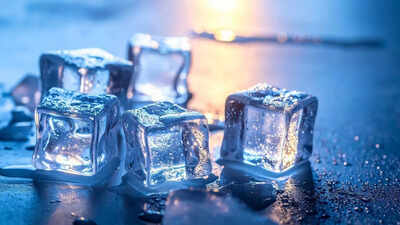Scientists just made ice at room temperature — rewriting the rules of physics |

For centuries, ice has fascinated scientists not just for its ubiquity but for the complex ways water molecules can arrange themselves in solid form. Recently, an international team of researchers has achieved a breakthrough by creating a new form of ice, named ice XXI, at room temperature under extreme pressure. Using advanced X-ray facilities at the European XFEL and PETRA III, the team was able to compress water so intensely that it crystallised into a previously unknown structure. This “impossible” phase challenges our understanding of how water behaves under extreme conditions and could offer insights into the interiors of icy moons such as Titan and Ganymede. The discovery highlights the extraordinary complexity hidden within something as simple as H₂O.
What is room temperature ice XXI
Ice XXI is a metastable phase of ice that forms when liquid water is subjected to rapid, extreme compression. Unlike conventional ice that forms only at cold temperatures, ice XXI can exist at room temperature under pressures of up to two gigapascals, which is about 20,000 times normal atmospheric pressure. Its molecules are tightly packed in a tetragonal crystal structure, creating a unique arrangement not seen in other ice phases. Metastable means the ice can persist temporarily even though other ice forms would normally be more stable under the same conditions.
How did scientists create ice at room temperature
The research team used diamond anvil cells, where a small water sample is placed between two diamond tips and subjected to extreme pressure. The water was compressed to 2 GPa within just 10 milliseconds and then released slowly over one second. These cycles were repeated more than 1,000 times. Using the ultrafast X-ray pulses of the European XFEL, scientists captured images every microsecond, essentially filming the crystallisation of ice in real time. This unprecedented method allowed them to observe multiple pathways of freezing and melting, revealing the hidden complexity of water under pressure.
Why this discovery matters
Water is deceptively simple, as H₂O molecules create a wide range of ice phases under different conditions, but most are unstable at normal temperatures. Ice XXI demonstrates that new and unexpected structures can exist under extreme conditions, expanding our knowledge of water’s behaviour. Understanding these phases is not just academic; it can help scientists model the interiors of icy moons and planets, where similar pressures exist, and could also inform materials science research on water-based systems.
Insights into icy moons and planetary science
Icy moons such as Titan and Ganymede are thought to contain layers of high-pressure ice beneath their frozen surfaces. Ice XXI offers a model for understanding how water behaves in such environments. Its unusual structure suggests that there may be more high-pressure ice phases yet to be discovered, each with unique properties that could influence planetary geology and potential habitability.
The role of modern technology
This discovery was made possible by the combination of dynamic diamond anvil cells and ultrafast X-ray imaging. The European XFEL’s intense, rapid X-ray flashes allowed researchers to track molecular movements in real time, essentially creating “movies” of ice formation. Such technology is opening doors to exploring the behaviour of molecules under extreme conditions, which was previously impossible to observe directly.
What’s next for ice research
The discovery of ice XXI is just the beginning. Scientists now hope to explore other metastable ice phases and understand their formation and transition pathways. These studies could reveal even more about the role of water in planetary interiors and inspire innovative applications in materials science, high-pressure physics and even astrobiology. The hidden complexity of ice reminds us that even the most familiar substances can still surprise us.






